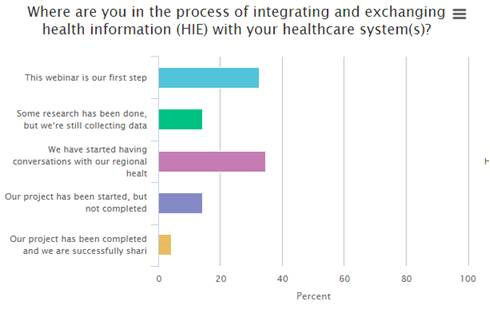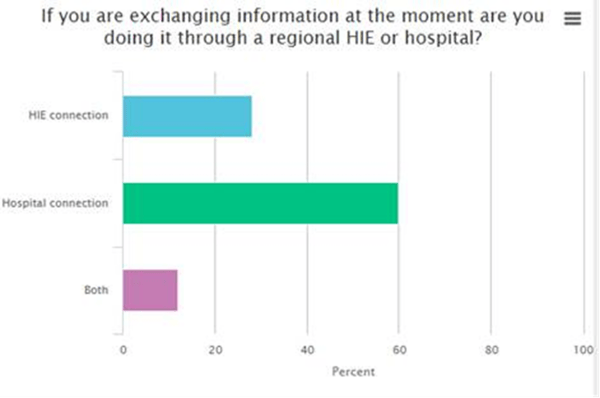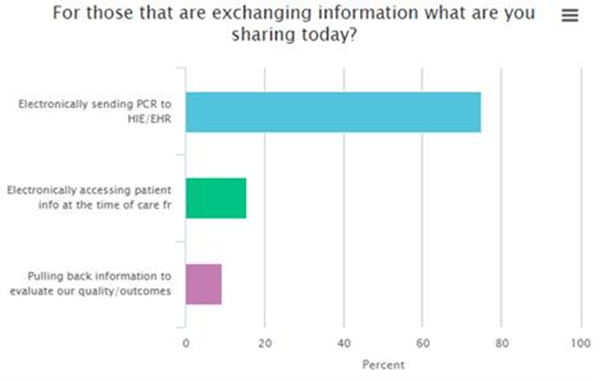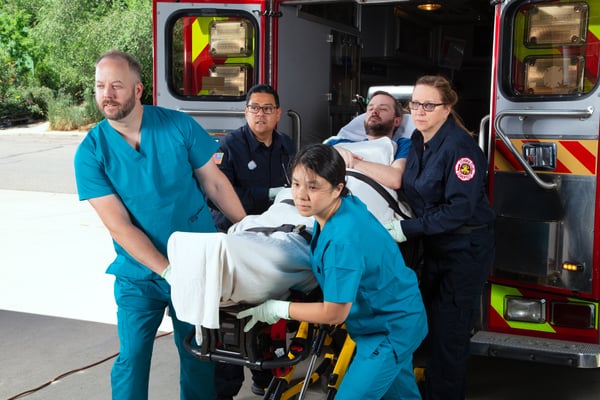Hospitals: Here’s How To Build Partnership With EMS and Improve Performance
How to Get Your Hospital Partners to Share EMS Data
Omaha Fire is currently working to share our patient care reports (PCRs) with local hospitals, with the caveat that we would receive hospital outcomes back through EPIC’s e-Outcomes portal
Was this information valuable?

Omaha Fire is currently working to share our patient care reports (PCRs) with local hospitals, with the caveat that we would receive hospital outcomes back through EPIC’s e-Outcomes portal. So far, we have strong interest from our hospital partners, EPIC and ZOLL to make this happen. We’re pushing to complete phase 1, which is data to the hospitals, during the first quarter of 2017. Phase 2, which is data back into e-Outcomes, will follow once all EPIC and CERNER hospital partners are on board.
Getting Your Partners Onboard
How did we get here considering how hard it is to get hospitals excited about sharing patient information with EMS? It’s taken some time; we’ve actually been at this for a couple of years. We never seemed to have the right people at the table at a given hospital; so we modified our approach to include multiple roles and levels of responsibility at all the hospitals in our area. Keep in mind, this also meant we had to have various levels of conversations between key parts of EMS and our hospital partners.
At our first meeting, we also invited our ePCR vendor, ZOLL, to attend. At the beginning of the meeting we did a roundtable introduction where each hospital ER manager said what they did with the PCR’s from Omaha Fire. The first ER manager that spoke said that they never look at the paper they are given from EMS; they just throw it in the trash. A silence spread throughout the room. Fortunately, the next ER manager quickly piped in that they take their PCRs and fully review them. It got better from there. Some providers mentioned they hand type the PCR into their EPIC system. This is the perfect example as to why it’s important to have these meetings.
In the next meeting, we knew it was important to get a different level of understanding. We invited multiple people to attend from the ER that were known for being engaged as well as all levels of technical staff to address any issues that may arise regarding data protection issues. Previous meetings with the hospital didn’t include these folks, which I believe kept hanging us up from making progress.
The good news is, ePCRs are no longer being discarded by our hospital partners; and we plan to begin sharing data back and forth with them in the near future. For more information regarding integrated healthcare, read the three-part series on healthcare reform and the future of EMS.
Omaha Fire's Top 5 Tips for Hospital Integration
If you’re looking to integrate your EMS service to the greater healthcare system, keep these five tips in mind:
- Find committed vendors with a solid track record that are willing to help keep the dialog going. Integrating EMS with the Healthcare system requires vendor commitment. Request references and steer clear of vendors that don’t have much experience in this area
- Host the meeting pow-wow style instead of a 1:1 meetings with each hospital. Have light refreshments and give people a chance to talk openly about all obstacles and concerns. That open forum gives you the opportunity to address concerns of everyone. Once you gather everyone together, it’s amazing how much they will want to be the first to integrate with you.
- Invite the people who approve finances and policies, as well as senior IT experts from your hospital partner.
- Be firm about your request. If it’s a two-way street of data sharing that you want, ask for this commitment up front in writing. We put it in our contracts with the hospitals that wanted our EMS data.
- Know that it won’t be perfect at the beginning. Taking the first step is better than no progress at all; stay with it.
Survey Says: We Have a Shared Vision
Omaha Fire recently unveiled its vision to share patient data with local hospital partners during a webinar on Integrating EMS with the Healthcare System. Omaha Fire will be the first in Nebraska, and one of the first Fire Departments in the United States, to use/collect National EMS Information System (NEMSIS) 3 data for EMS runs. This led me to think about what we could do with the data. We realized we had a tremendous opportunity in front of us regarding the potential for NEMSIS 3 harmonizing with HL7 (health level 7), the international standard for communicating patient information with hospitals. NEMSIS 3 and HL7 could bring our hospital partners to the table to work toward a unified vision for sharing patient information. According to a quick poll we took at the conclusion of the webinar, many of my EMS colleagues also have a similar vision.

It appears that this webinar is the first step for 35 percent of the audience. I was also amazed that 38 percent of the attendees were already in conversation mode with local hospitals or Health Information Exchange (HIE). Lastly, 18 percent of the audience had already started or completed their project.

It’s interesting to see that 60 percent are communicating with the hospital systems directly, while 25 percent are only integrated with their HIE. Even though only 16 percent have pursued the blended route, what you pick will depend on your local partners.

Seventeen percent of this audience is already able to look up patient allergies and other medical history to give better informed care and potentially transport patients to alternate destinations. While only 6 percent report being able to pull back information that will help their service improve care with outcomes data, this represents the Holy Grail for true EMS integration.
Related Posts
How Hospitals Can Improve Patient Throughput, Streamline Discharge, and Prevent Readmissions
Supporting Better Operational and Financial Performance With EMS-Hospital Collaboration
ZOLL Pulse Blog
Subscribe to our blog and receive quality content that makes your job as an EMS & fire, hospital, or AR professional easier.
ZOLL Pulse Blog
Subscribe to our blog and receive quality content that makes your job as an EMS, fire, hospital, or AR professional easier.




